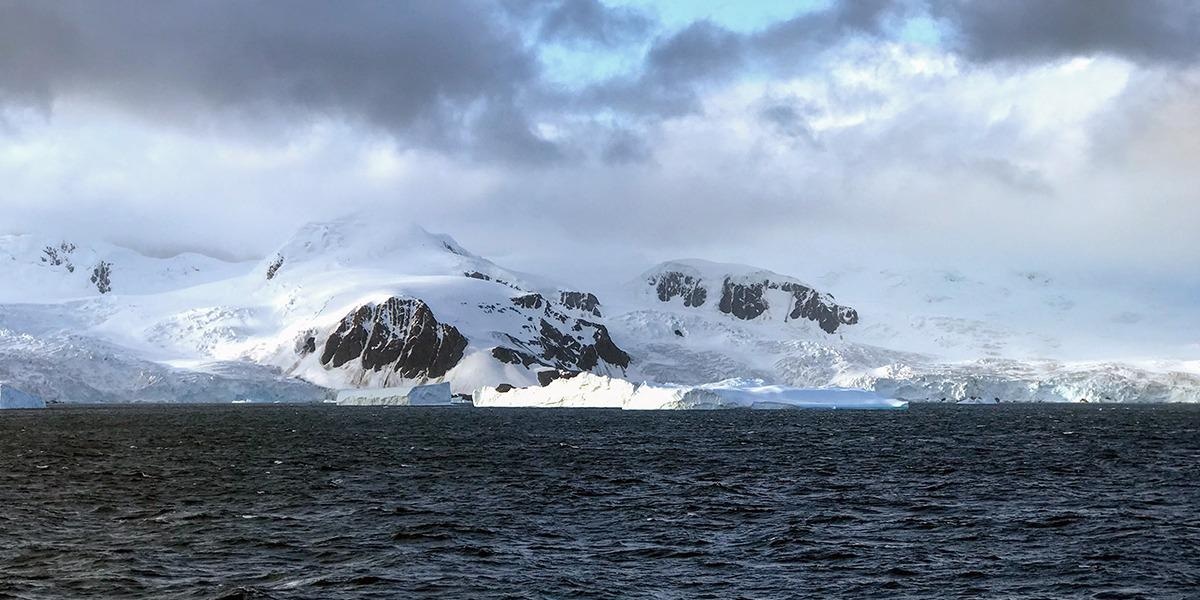Reviewed by Alex SmithSep 1 2021
Although insufficient iron is a limiting factor for the growth of algae in the oceans, more dissolved iron present in the ocean East of Greenland as a result of the melting of the Greenland ice sheet does not facilitate more algal growth in the region.
 Elephant Island near Antarctica was one of Indah Ardiningsih’s research areas. Image Credit: Royal Netherlands Institute for Sea Research.
Elephant Island near Antarctica was one of Indah Ardiningsih’s research areas. Image Credit: Royal Netherlands Institute for Sea Research.
By contrast, algae off the coast of Antarctica benefit from highly dissolved iron in water due to melting ice.
The difference is because, near Antarctica, organic molecules maintain the iron in solution, whereas near Greenland, they do not. The fact was discovered by the Royal Netherlands Institute for Sea Research (NIOZ) researcher Indah Ardiningsih.
Iron is a vital element for all living cells. In the case of seawater, iron occurs at an extremely low concentration. “Marine algae, the base of the marine food web, living near the water surface, can be limited by iron shortage. This is a consequence of the fact that a large part of the iron particles that end up in the water from the air or from land form iron-oxide particles and sink down to the ocean floor, where they are thus lost for marine life.”
More Iron, but no Increase in Greenland Algal Bloom
Indah Ardiningsih, a marine biogeochemist from the NIOZ Royal Netherlands Institute for Sea Research, hopes to graduate on September 3rd, 2021, for her research on the factor that greatly impacts the availability of iron for marine life: so-called organic ligands.
These are dissolved molecules in the seawater that bind dissolved iron. That is why the formation of iron oxide is slowed down or even prevented, causing iron molecules to remain in the water, available for algae that live the surface water.
Indah Ardiningsih, Marine Biogeochemist, Royal Netherlands Institute for Sea Research
The melting of the Greenland ice is expected to raise the runoff of iron into the Fram Strait, which is an open ocean to the East of Greenland. Researchers are looking forward to a larger supply of dissolved iron to boost the algal bloom in summer. However, an increase in the dissolved iron content was not noted.
Regarding this fact, Ardiningsih’s discovery states, “The organic ligands in this water have a weak capacity to bind the dissolved iron: they can’t hold the iron tightly. What causes this weakness of ligands near Greenland, is still unknown.”
Empty-Handed Ligands
Ardiningsih went on a seven-week scientific cruise to Antarctica to support her PhD research.
To be able to explain the chemistry and availability of iron in this research, the study of organic ligands is necessary. I took samples of many different depths. Due to the very low concentrations, studying ligands in these waters is very challenging. But due to my precise measurements, for three water masses that are different in temperature and salinity, we were able to distinguish specific characteristics of the different ligands that are present.
Indah Ardiningsih, Marine Biogeochemist, Royal Netherlands Institute for Sea Research
The ligands present around Antarctica contributed to increasing the residence time of the dissolved iron in the seawater.
We took our samples at the beginning of Spring. 80% of the ligands there were ‘free’ at the time. If they’d be human, they would have two empty hands, implying that later in the season, when more iron would enter the water with melting ice, the ligands would be able to hold the iron and thus feed the algal bloom.
Indah Ardiningsih, Marine Biogeochemist, Royal Netherlands Institute for Sea Research